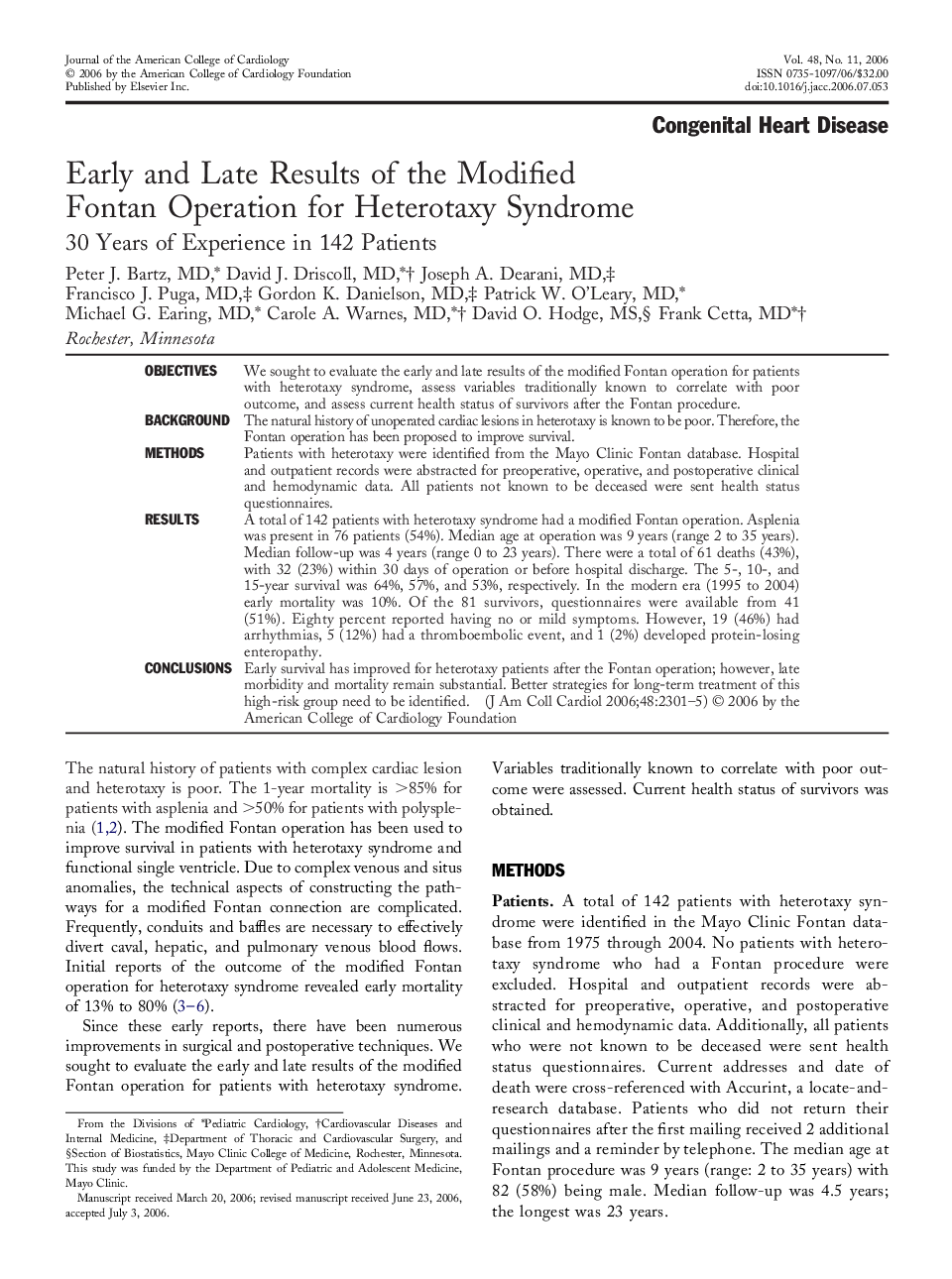| Article ID | Journal | Published Year | Pages | File Type |
|---|---|---|---|---|
| 2951965 | Journal of the American College of Cardiology | 2006 | 5 Pages |
ObjectivesWe sought to evaluate the early and late results of the modified Fontan operation for patients with heterotaxy syndrome, assess variables traditionally known to correlate with poor outcome, and assess current health status of survivors after the Fontan procedure.BackgroundThe natural history of unoperated cardiac lesions in heterotaxy is known to be poor. Therefore, the Fontan operation has been proposed to improve survival.MethodsPatients with heterotaxy were identified from the Mayo Clinic Fontan database. Hospital and outpatient records were abstracted for preoperative, operative, and postoperative clinical and hemodynamic data. All patients not known to be deceased were sent health status questionnaires.ResultsA total of 142 patients with heterotaxy syndrome had a modified Fontan operation. Asplenia was present in 76 patients (54%). Median age at operation was 9 years (range 2 to 35 years). Median follow-up was 4 years (range 0 to 23 years). There were a total of 61 deaths (43%), with 32 (23%) within 30 days of operation or before hospital discharge. The 5-, 10-, and 15-year survival was 64%, 57%, and 53%, respectively. In the modern era (1995 to 2004) early mortality was 10%. Of the 81 survivors, questionnaires were available from 41 (51%). Eighty percent reported having no or mild symptoms. However, 19 (46%) had arrhythmias, 5 (12%) had a thromboembolic event, and 1 (2%) developed protein-losing enteropathy.ConclusionsEarly survival has improved for heterotaxy patients after the Fontan operation; however, late morbidity and mortality remain substantial. Better strategies for long-term treatment of this high-risk group need to be identified.
